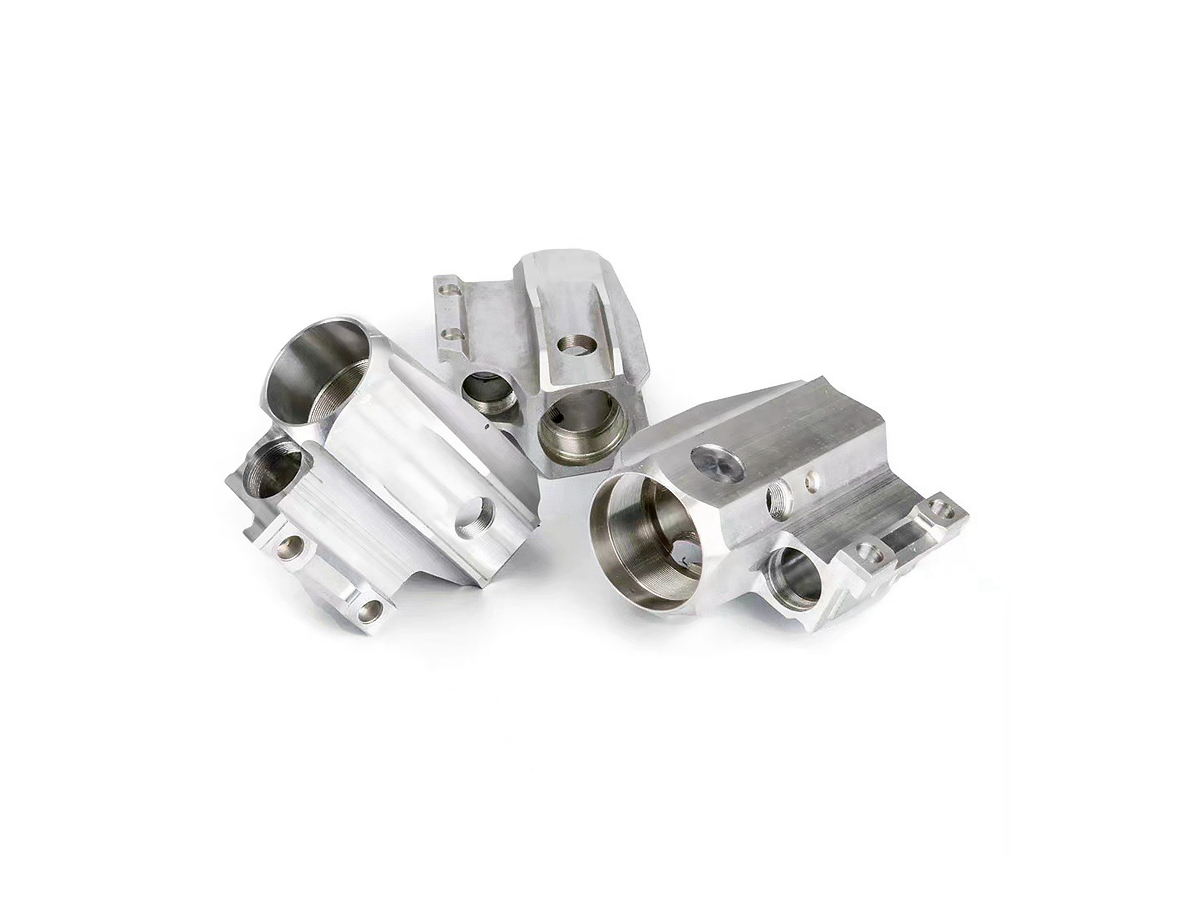Specialized Low-Volume CNC Machining of SUS316 Stainless Steel for Corrosion-Resistant Parts
Introduction to Specialized Low-Volume CNC Machined SUS316 Stainless Steel in Corrosion-Resistant Applications
Industries such as marine engineering, medical devices, and chemical processing require materials with superior corrosion resistance, durability, and high-performance mechanical properties. SUS316 stainless steel, renowned for its exceptional resistance to chloride-induced corrosion and robustness in harsh environments, is ideally suited for specialized low-volume manufacturing of precision components such as valves, fittings, marine hardware, and medical instrumentation.
Leveraging advanced CNC machining, manufacturers produce precise, corrosion-resistant SUS316 stainless steel components with intricate geometries, exact dimensional tolerances, and superior surface finishes, ensuring long-lasting performance and reliability.
Comprehensive Analysis of SUS316 Stainless Steel for Corrosion-Resistant Components
Comparative Performance of SUS316 Stainless Steel and Similar Materials
Material | Tensile Strength (MPa) | Yield Strength (MPa) | Machinability | Typical Applications | Advantage |
|---|---|---|---|---|---|
515-620 | 205-310 | Moderate | Marine fittings, chemical valves | Superior corrosion resistance, durable | |
485-620 | 170-310 | Moderate | Surgical instruments, implants | Enhanced biocompatibility, corrosion resistance | |
515-720 | 205-515 | Good | Food equipment, general fittings | Good corrosion resistance | |
620-750 | 240-450 | Excellent | Instrumentation, precision parts | Superior machinability |
Strategic Material Selection for CNC Machined SUS316 Stainless Steel Components
Selecting SUS316 stainless steel for low-volume CNC machining involves careful consideration of corrosion resistance, mechanical properties, and environmental exposure:
Marine hardware, chemical processing valves, and fittings exposed to chloride-rich environments significantly benefit from SUS316 stainless steel due to its superior resistance to pitting and corrosion (PREN value typically above 24).
Components used in medical applications or environments demanding even greater corrosion resistance and biocompatibility often select SUS316L stainless steel.
General-purpose parts or fittings where moderate corrosion resistance suffices typically utilize SUS304 stainless steel.
Precision instrumentation components prioritizing machinability are frequently manufactured from SUS303 stainless steel.
Precision CNC Machining Processes for SUS316 Stainless Steel Components
CNC Machining Process Performance Overview
CNC Machining Process | Dimensional Accuracy (mm) | Surface Roughness (Ra μm) | Typical Applications | Key Advantages |
|---|---|---|---|---|
±0.005-0.01 | 0.4-1.6 | Valves, cylindrical fittings | Precision rotational accuracy | |
±0.005-0.02 | 0.4-3.2 | Complex marine components, brackets | Versatile machining capability | |
±0.01-0.02 | 1.6-3.2 | Mounting holes, precision assemblies | Accurate hole positioning | |
±0.003-0.01 | 0.2-0.6 | High-complexity medical and chemical components | Exceptional precision, complex geometries |
Optimizing CNC Machining Processes for SUS316 Stainless Steel Components
Optimal selection of CNC machining methods for SUS316 stainless steel involves assessing component complexity, dimensional tolerances, and required surface finishes:
Cylindrical fittings, marine valves, and rotating parts demanding precise tolerances of ±0.005 mm and excellent surface finishes (Ra ≤1.6 µm) are ideally suited to CNC Turning Service.
Complex marine brackets, chemical processing fittings, and precision medical components requiring detailed features and dimensional accuracy within ±0.005 mm utilize CNC Milling Service.
Components requiring accurately positioned holes (±0.01 mm tolerance), such as mounting brackets and precision assemblies, benefit from CNC Drilling Service.
High-precision medical instruments, marine fittings with complex shapes, and intricate chemical processing components demanding tight tolerances (±0.003 mm) and superior surface finishes are best manufactured with Multi-Axis CNC Machining Service.
Advanced Surface Treatments to Optimize SUS316 Stainless Steel Components
Surface Treatment Performance and Suitability
Treatment Method | Corrosion Resistance | Wear Resistance | Industrial Suitability | Typical Applications | Key Features |
|---|---|---|---|---|---|
Excellent (>1000 hrs ASTM B117) | Moderate | Excellent | Marine valves, chemical fittings | Improved corrosion resistance, purity | |
Outstanding (>1500 hrs ASTM B117) | Moderate | Excellent | Medical instruments, marine hardware | Superior surface smoothness, corrosion resistance | |
Excellent (>1500 hrs ASTM B117) | Very High (HV1500-2500) | Excellent | High-wear chemical processing parts | Enhanced wear resistance, durability | |
Good | Moderate | Good | Visible fittings, brackets | Uniform matte finish |
Strategic Surface Treatment Selection for CNC Machined SUS316 Stainless Steel
Optimal surface treatments for SUS316 components focus on enhanced corrosion resistance, wear durability, and aesthetic consistency:
Marine valves, chemical processing fittings, and precision components exposed to aggressive environments undergo Passivation for enhanced corrosion protection (≥1000 hrs ASTM B117).
For medical instruments, marine hardware, and fittings requiring superior smoothness and corrosion protection, choose Electropolishing for improved hygiene and durability.
Components subjected to abrasive conditions or mechanical stress, such as chemical processing valves and fittings, use PVD Coating for superior hardness (1500-2500 HV) and durability.
Visually prominent components like brackets and visible hardware benefit from Sandblasting for consistent, aesthetically pleasing finishes.
Rigorous Quality Assurance for CNC Machined SUS316 Stainless Steel Parts
Detailed Quality Control Practices
Quality assurance for CNC machined SUS316 stainless steel components includes:
Dimensional Inspection: Coordinate Measuring Machines (CMM) to ensure compliance with tight dimensional tolerances (±0.003 mm to ±0.01 mm).
Surface Finish Testing: Profilometers verify that surface roughness meets specified criteria (Ra 0.2-3.2 µm).
Mechanical Property Testing: Tensile, yield strength, and hardness tests (ASTM E8 standards) validate consistent material performance.
Corrosion Resistance Testing: ASTM B117 salt spray testing ensures corrosion resistance surpasses 1000 hours.
Non-Destructive Testing (NDT): Ultrasonic, radiographic, and liquid penetrant inspections detect internal and surface defects.
Comprehensive Documentation: ISO 9001-compliant documentation ensures full traceability and adherence to rigorous quality standards.
Key Applications of CNC Machined SUS316 Stainless Steel Components
Marine fittings and hardware.
Chemical processing valves and components.
Medical device components.
Precision instrumentation parts.
Related FAQs:
Why choose SUS316 stainless steel for specialized CNC machined corrosion-resistant components?
Which CNC machining processes provide the highest accuracy for SUS316 stainless steel?
What surface treatments enhance corrosion resistance in SUS316 components?
How does low-volume CNC machining benefit SUS316 stainless steel part production?
What industries rely most on CNC machined SUS316 stainless steel components?

